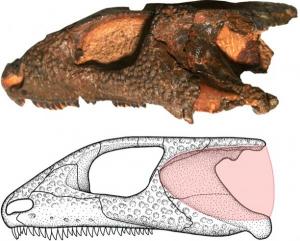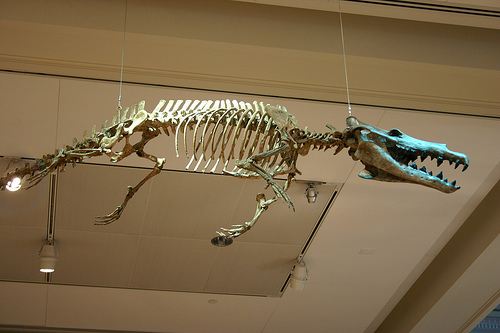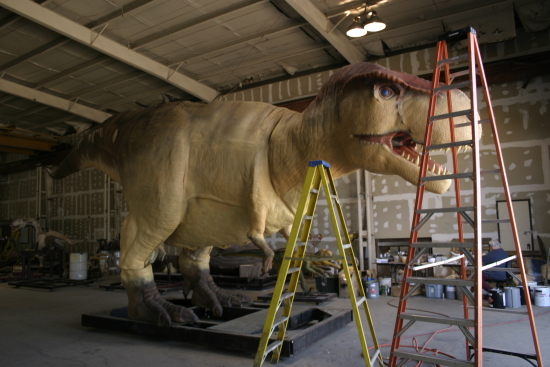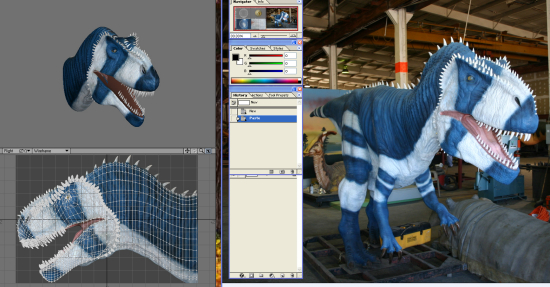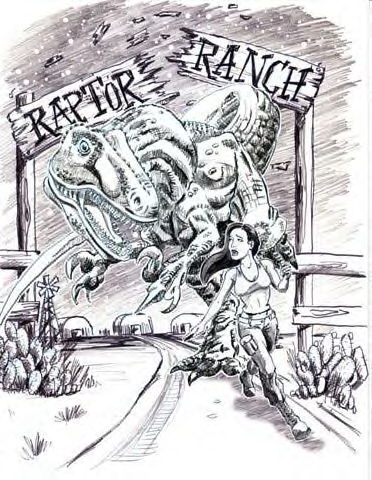Seriously, shut up about dinosaur cloning. Unless you got some dinosaur DNA lying around, this is not applicable in the slightest. But thanks for the plug for the Jurassic Park book at the end, for those people who want to read a bad novel from hack political sellout. Speaking of movies, how come there isn’t many Thylacine films? The only one I know about is Howling 3: The Marsupials. Thylacines are just ripe for exploitation in a SciFi Channel-type film. Tasmanian Tiger Terror! Six teenagers are pursued by Tasmanian Devils only to find that they are not the only danger in the Outback jungle. Starring Dean Cain and some random chick from Buffy.
Extinct Tasmanian tiger gene brought back to life: scientists
by Lawrence Bartlett Tue May 20, 3:14 AM ET
SYDNEY (AFP) – Scientists said Tuesday they had “resurrected” a gene from the extinct Tasmanian tiger by implanting it in a mouse, raising the future possibility of bringing animals such as dinosaurs back to life.
In what they describe as a world first, researchers from Australian and US universities extracted a gene from a preserved specimen of the doglike marsupial — formally known as a thylacine — and revived it in a mouse embryo.
“This is the first time that DNA from an extinct species has been used to induce a functional response in another living organism,” said research leader Andrew Pask of the University of Melbourne.
The announcement was hailed here as raising the possibility of recreating extinct animals.
Mike Archer, dean of science at the University of New South Wales who led an attempt to clone the thylacine when he was director of the Australian Museum, called it “one very significant step in that direction.”
“I’m personally convinced this is going to happen,” he told the Australian Broadcasting Corporation. “I’ve got another group working on another extinct Australian animal and we think this is highly probable.”
Pask told AFP in a telephone interview that while recreating extinct animals might be possible one day, it could not be done with the technique his team used on the Tasmanian tiger.
“We can look at the function of one gene within that animal. Most animals have about 30,000 genes,” he said.
“We hope that with advances in techniques that maybe one day that might be possible, but certainly as science stands at the moment, we are not able to do that, unfortunately.
“We’ve now created a technique people can use to look at the function of DNA from any extinct species, so you could use it from mammoth or Neanderthal man or even dinosaurs if there’s some intact DNA there.”
The last known Tasmanian tiger, which took its name from the Australian island and the stripes on its back, died in captivity in the Hobart Zoo in 1936, having been hunted to extinction in the wild in the early 1900s.
Some thylacine pups and adult tissues were preserved in alcohol, however, and the research team used specimens from the Museum Victoria in Melbourne.
“The research team isolated DNA from 100-year-old ethanol-fixed specimens,” the scientists said in a statement.
“After authenticating this DNA as truly thylacine, it was inserted into mouse embryos and its function examined.
“The thylacine DNA was resurrected, showing a function in the developing mouse cartilage, which will later form the bone.”
The results were due to be published in the international scientific journal PLoS ONE on Tuesday.
“This research has enormous potential for many applications including the development of new biomedicines and gaining a better understanding of the biology of extinct animals,” said co-researcher Richard Behringer of the University of Texas.
At a time when extinction rates are increasing the discovery is critical, said senior author Marilyn Renfree of the University of Melbourne.
“For those species that have already become extinct, our method shows that access to their genetic biodiversity may not be completely lost,” she said.
But Renfree also cautioned that the recreation of extinct animals was not the aim of the research.
“Maybe one day this might be possible but it won’t happen in my lifetime,” she told AFP. “It might happen in my children’s lifetime, but there’s so many steps we need to achieve before you could actually make this work.”
The prospect of bringing extinct animals back to life caught the public imagination after Steven Spielberg’s 1993 film “Jurassic Park,” based on the novel of the same name by Michael Crichton.
In that story, dinosaurs are cloned from genetic material found in mosquitoes that had sucked their blood before becoming preserved in amber. The dinosaurs then wreak havoc.
